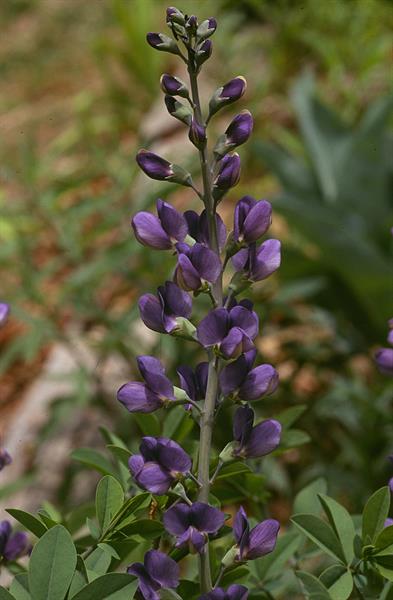
Origin/Endemic status: Endemic
Taxonomy Comments: See Weakley et al. (2018a) for detailed discussion of the taxonomy of the "blue Baptisias".
Synonymy: = F, Il, W, Larisey (1940a), Weakley et al (2018a); = Baptisia australis (L.) R.Br. var. australis – C, G, K1, K3, NE, NY, Va, Mendenhall (1994a), Mendenhall (1994b); < Baptisia australis (L.) R.Br. – Pa, RAB, S, S13, Tn; < Baptisia australis (L.) R.Br. var. australis – FNA11.1, SE3, Isely (1981), Isely (1998), Turner (2006a)
Wetland Indicator Status:
- Atlantic and Gulf Coastal Plain: FACU (taxonomic split from wetland indicator species)
- Eastern Mountains and Piedmont: FACU (taxonomic split from wetland indicator species)
- Great Plains: UPL (taxonomic split from wetland indicator species)
- Midwest: FACU (taxonomic split from wetland indicator species)
- Northcentral & Northeast: FACU (taxonomic split from wetland indicator species)
Heliophily: 8
Hover over a shape, letter, icon, or arrow on the map for definition or see the legend.
 © Emily Oglesby | Original Image ⭷
© Emily Oglesby | Original Image ⭷ © Richard & Teresa Ware CC-BY-NC, permission granted to NCBG | Original Image ⭷
© Richard & Teresa Ware CC-BY-NC, permission granted to NCBG | Original Image ⭷ © Emily Oglesby | Original Image ⭷
© Emily Oglesby | Original Image ⭷ © Emily Oglesby | Original Image ⭷
© Emily Oglesby | Original Image ⭷ © Grant Morrow Parkins | Original Image ⭷
© Grant Morrow Parkins | Original Image ⭷ © Erik Danielson source | Original Image ⭷
© Erik Danielson source | Original Image ⭷Feedback
See something wrong or missing on about Baptisia australis? Let us know here: (Please include your name and email if at all complicated so we can clarify if needed.)
Cite as...